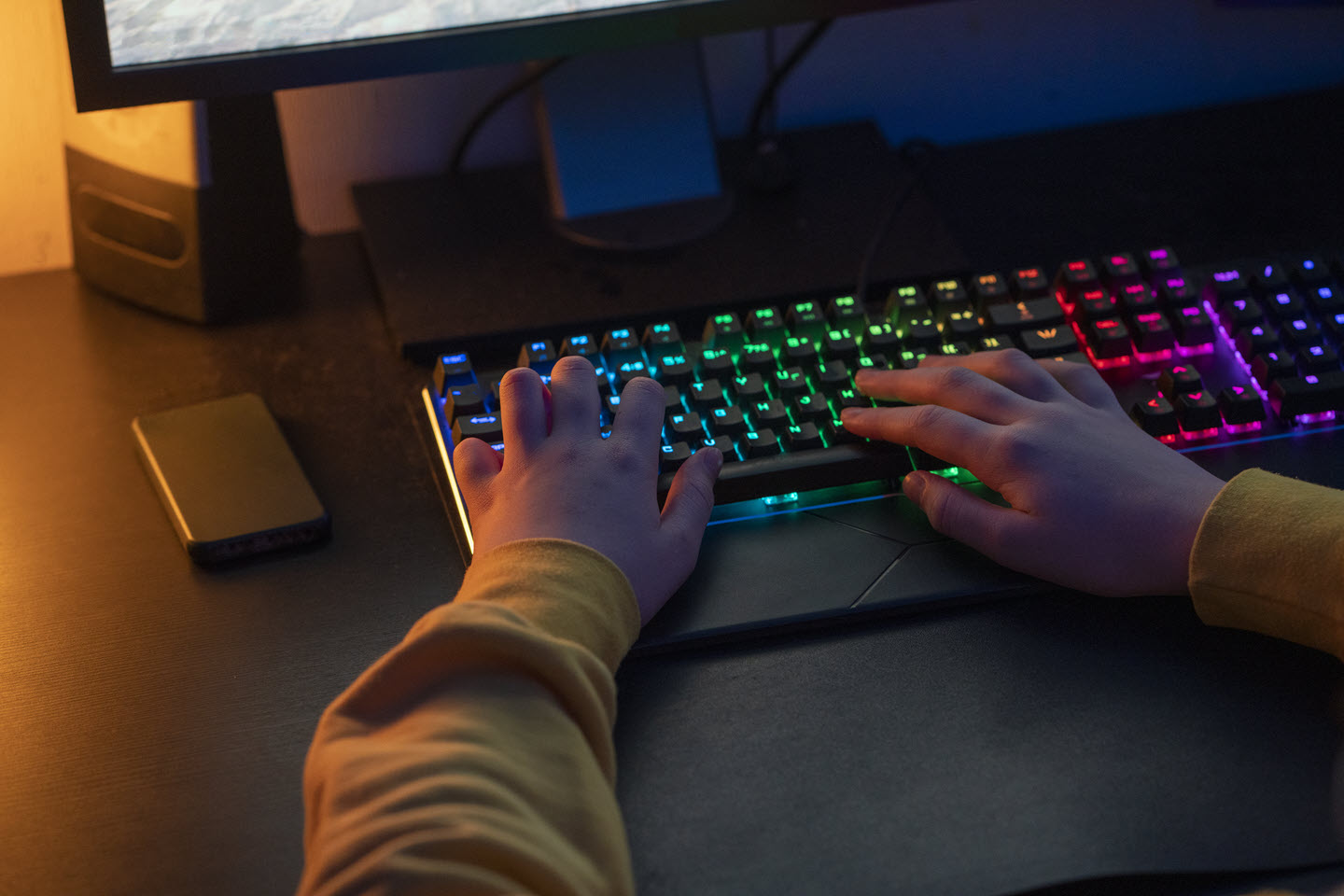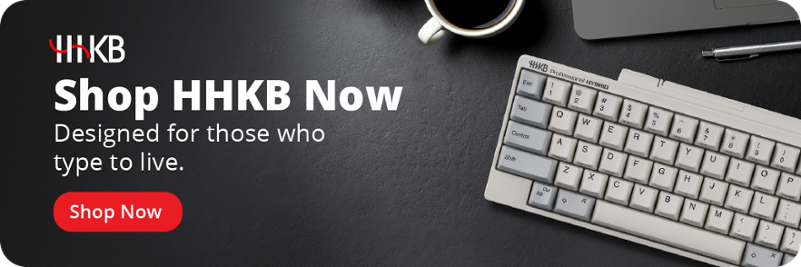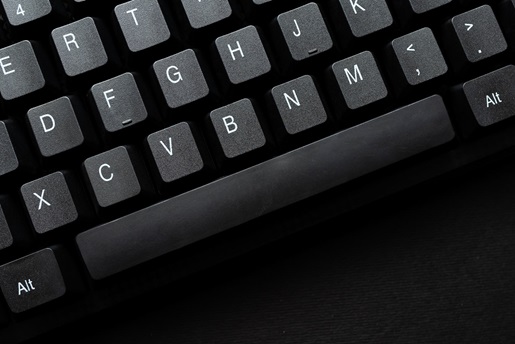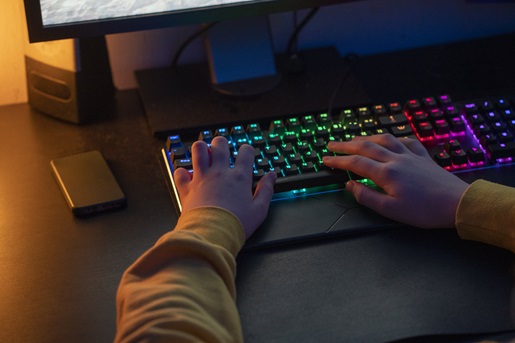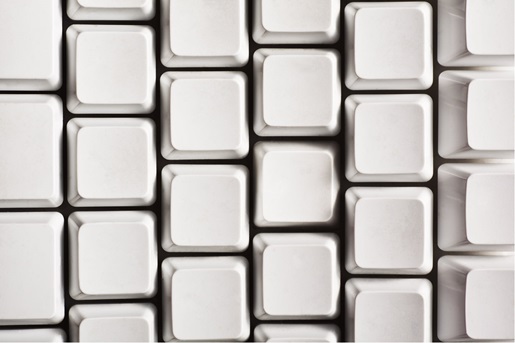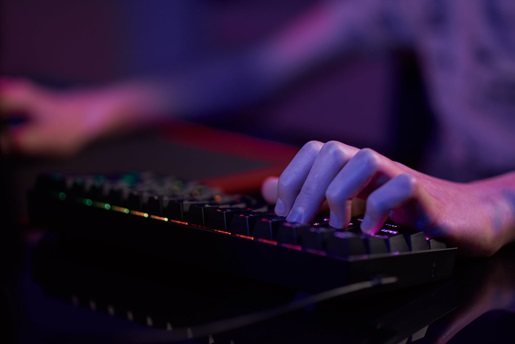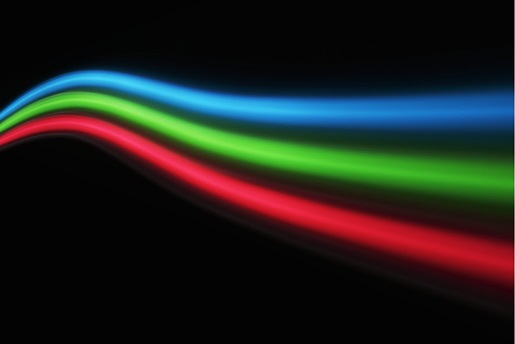Learn how to find the perfect set of keycaps for your mechanical keyboard.
Key switches are the core of the mechanical keyboard industry and hobby, but the fun doesn’t end there. By standardizing around an ever-expanding set of Cherry-MX-style mechanical switches, the hobby has played host to an explosion of unique mass market products as well as individual components for the amateur keyboard customizer.
The dizzying array of Cherry MX keycaps created by major companies, boutique makers, and DIYers is one of the most marvelous results of the burgeoning mechanical keyboard community. This article will introduce you to what makes a Cherry MX keycap special, what kinds of keyboards they’re compatible with, and where you can find more of them if you want to start customizing your own mechanical keyboard.
Find the perfect keycaps for every board in your collection with our Essential Guide to Keycaps or shop Cherry MX compatible keyboards now.
What are Cherry MX keycaps?
Cherry MX keycaps are keycaps that are compatible with Cherry-MX-style switches, such as the loud-and-proud “clicky” Cherry MX Blues and the quieter, more tactile Cherry MX Browns. We refer to the style of switches because the same caps are also compatible with the many key switches created by other companies to a similar specification. The fundamental element that makes a keycap a Cherry MX keycap is the cross-shaped mount on the underside of the cap, as this is what allows the cap to be securely seated on a Cherry-MX-style switch.
Not all keycaps can be fitted onto Cherry-MX-style switches — for instance, the Topre switches that give HHKB keyboards their beloved “thwock” are made to fit with specially engineered Topre keycaps. However, the majority of mechanical keyboards on the market today use Cherry MX keycaps. Beyond what you can find pre-installed on mass market boards, custom Cherry MX keycaps are one of the most common products for specialist mechanical keyboard creators and retailers. Note that, in the context of keycaps, the term “Cherry” also refers to a specific kind of keycap profile — more on that in just a moment.
Did You Know?:HHKB keyboards are available in multiple colors to suit your desk aesthetics, and you can even opt for a clean, legend-less look. Click here to learn more.
Key features of Cherry MX keycaps: Durability, fit, and feel
Finding the perfect Cherry MX keycaps is one of the most exciting parts of crafting a custom keyboard — or if you’re browsing pre-built models, it can be another great way to narrow down contenders. These three considerations serve as the chief distinctions between different types of keycaps
Because Cherry-compatible keycaps come from so many different vendors, there’s no definitive list of all the different options. Generally speaking, you’ll choose keycaps based on their material, compatibility, and profile.
A keycap’s appearance — its color, design, transparency, and so forth — will also be a major factor in your decision. However, this is mostly a matter of personal taste and budget. Remember that you can also mix, match, and replace keycaps over time, so don’t stress over finding the “perfect” set.
Popular materials used in Cherry MX keycaps: ABS vs. PBT
Cherry MX keycaps are typically made out of plastic, but the particular kind of plastic they use can make a big difference in their feel, durability, and price point. The two most common types are acrylonitrile butadiene styrene (ABS), which tend to be more affordable but can develop an unappealing shine after extended use, and polybutylene terephthalate (PBT), which tend to be more durable but also more expensive.
Some users have strong preferences about the way ABS and PBT keycaps look, feel, and sound. However, there’s no way to know which ones you prefer until you try them for yourself. Furthermore, both ABS and PBT keycaps vary considerably by manufacturer, so it’s difficult to draw sweeping conclusions about the materials. Either ABS or PBT can be part of a high-quality keycap.
Compatibility: How to install Cherry MX keycaps
As long as you buy Cherry MX-compatible keycaps, installation isn’t too difficult. As you browse keycaps, be sure to look for “Cherry MX” or “MX-style” in the product specifications. The underside of the keycap will resemble a plus sign, just like a Cherry MX switch. If you have a different type of switch, such as the Topre switches in the HHKB Professional series, you’ll want to invest in Topre-specific keycaps instead. (There are plenty of fun, inventive colorways for Topre keycaps, so enthusiasts can rest easy either way.)
From there, installing Cherry MX keycaps is incredibly simple. Use a keycap puller to remove your current keycaps, then press down the new keycap until it clicks into place. If you’re replacing everything at once, you may want to take a picture of your setup beforehand so you don’t accidentally put the new keycaps in the wrong place!
Just be aware that some larger keys, such as the Spacebar and possibly Enter, have stabilizer bars for better balance and performance. To install these, insert the plastic pegs into the keycap first, then slide them onto the stabilizer bar, one peg at a time. Press down — but not too hard — to click the key into place. Consult a video tutorial if you’re having any trouble; it’s easier than it sounds.
Cherry MX keycap profiles explained: Choosing the right fit
This defines the shape of each keycap, and whether that shape is uniform across the entire board or varies by row. For instance, Cherry profile keycaps have angled tops and are sculpted across each row to better meet your fingers, while XDA profile keycaps have concave tops that cradle your fingertips and are of uniform size regardless of row.
As with a keycap’s appearance and material, there’s no wrong choice here. However, it can be difficult to test your preferences before you buy, as most keycap retailers are online-only. Our complete guide to keycap profiles can help you narrow down your choices.
Caring for your Cherry MX keycaps: Cleaning and maintenance tips
If you want your Cherry MX keycaps to last a long time, you should clean them regularly. Wiping them down with a soft cloth is a good way to remove dust and debris. Over time, though, you might get some grime buildup from the oils in your skin. When that happens, it’s time to give your keycaps a bath.
First, remove all the keycaps from your keyboard. Add them to a bowl of warm water along with a small quantity of dish soap. Swish everything around until you build up a good quantity of suds. From there, you can let your keycaps soak for anywhere from one to eight hours, depending on how much cleaning they need. After that, let them dry in a colander or wipe them down with a soft towel. (Paper towels may be too abrasive.)
While your keycaps are soaking, take the time to clean the rest of your keyboard.
Where can I buy Cherry MX replacement keycaps?
If you want an easy and fun way to give an existing mechanical keyboard a fresh look, start by searching for some Cherry MX replacement keycaps. Numerous retailers sell standalone sets of keycaps; you can find looks inspired by your favorite video games, nature scenes, ocean creatures, or even more wide-ranging source material.
Here are a few places to pick up a beautiful new set of custom Cherry MX keycaps, as well as some videos showing off popular products.
Kbdfans
Kbdfans positions itself as a one-stop shop for the mechanical keyboard hobby, selling everything from circuit boards to cases to switches and, of course, keycaps. Its overall selection includes standard stock, clearance, and “interest check” items which will be restocked if enough people join the waiting list. You can still pick up the above NP PBT keycaps set if you want to add a little katakana flair to your typing. They also offer after-market Topre keycaps if you want to go beyond the realm of Cherry MX switches and caps.
Drop
Though the selection of keycaps available on Drop isn’t quite as broad as on Kbdfans, Drop’s selection of unique looks and high-quality keys is impressive across the board. Drop even offers some attention-grabbing crossovers, such as the official Lord of the Rings Elvish keycaps shown above.
Kinetic Labs
Kinetic Labs sells keyboard components, accessories, and that’s it — no pre-built kits like on Kbdfans, no audio equipment like on Drop. That narrow focus allows Kinetic Labs to put out some uniquely appealing products, such as the above Seal PBT keycaps set. If you have a hot-swappable board (or don’t mind going hands-on with a soldering iron) be sure to check out Kinect Labs’ selection of custom key switches as well.
Did You Know?:If you’re looking for a pre-built mechanical keyboard model, we have recommendations to suit every kind of budget. Click here to learn more.
Find your next dream keyboard
We noted above that Topre keycaps offer an alternative to the typical mechanical keyboard experience, and if you want to try a particular take on typing, you should add a representative from the HHKB line to your collection. HHKB began in 1995 when computer scientist Eiiti Wada crafted a new design for a more ergonomic and efficient typing experience, complete with high-end Topre switches to give each keypress precision as well as a satisfying feel and sound. The modern line of keyboards from HHKB carries on that legacy for a new generation of power user.
Note: Information and external links are provided for your convenience and for educational purposes only, and should not be construed, or relied upon, as medical advice, treatment, or diagnosis. PFU America, Inc. makes no representations about the contents, features, or specifications on such third-party sites, software, and/or offerings (collectively “Third-Party Offerings”) and shall not be responsible for any loss or damage that may arise from your use of such Third-Party Offerings. Please consult with a licensed professional regarding your specific situation and health needs.

